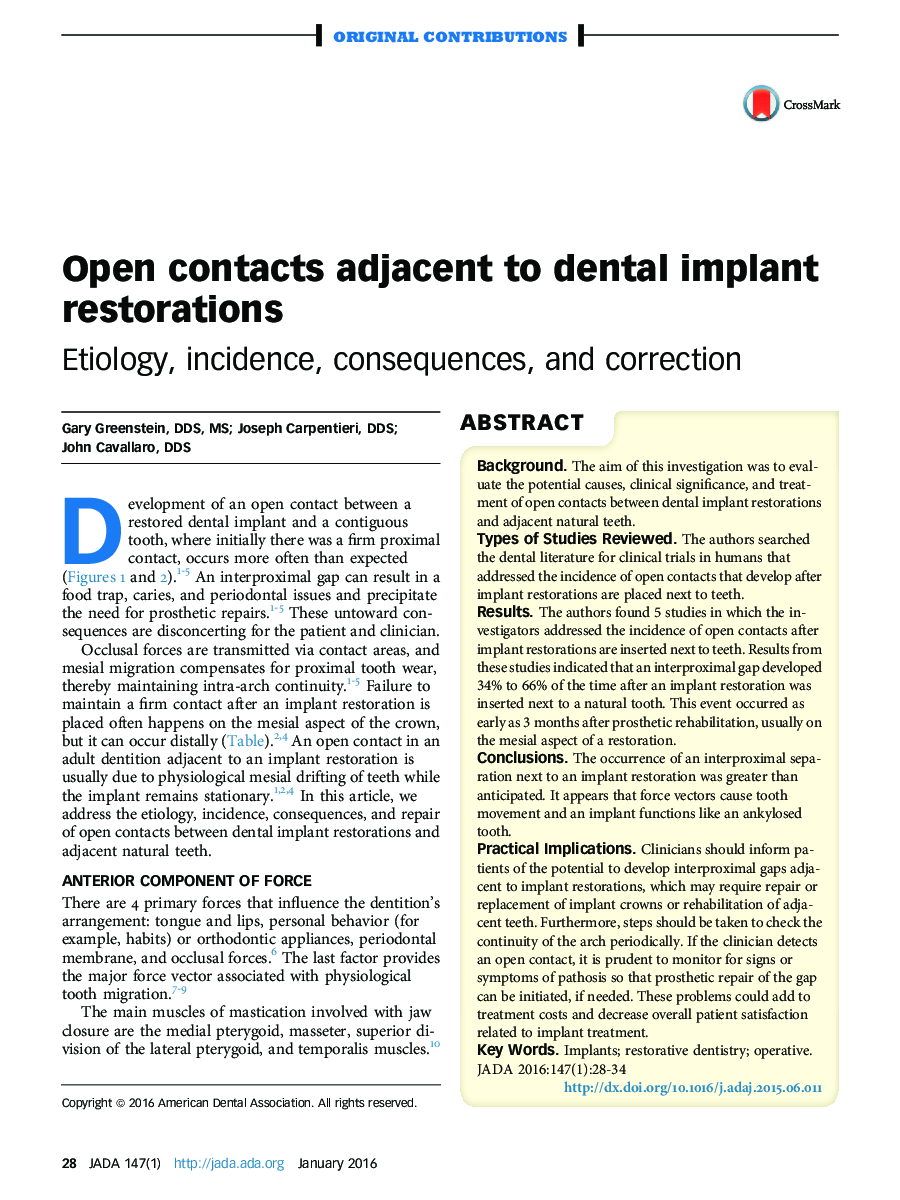| Article ID | Journal | Published Year | Pages | File Type |
|---|---|---|---|---|
| 3136407 | The Journal of the American Dental Association | 2016 | 7 Pages |
BackgroundThe aim of this investigation was to evaluate the potential causes, clinical significance, and treatment of open contacts between dental implant restorations and adjacent natural teeth.Types of Studies ReviewedThe authors searched the dental literature for clinical trials in humans that addressed the incidence of open contacts that develop after implant restorations are placed next to teeth.ResultsThe authors found 5 studies in which the investigators addressed the incidence of open contacts after implant restorations are inserted next to teeth. Results from these studies indicated that an interproximal gap developed 34% to 66% of the time after an implant restoration was inserted next to a natural tooth. This event occurred as early as 3 months after prosthetic rehabilitation, usually on the mesial aspect of a restoration.ConclusionsThe occurrence of an interproximal separation next to an implant restoration was greater than anticipated. It appears that force vectors cause tooth movement and an implant functions like an ankylosed tooth.Practical ImplicationsClinicians should inform patients of the potential to develop interproximal gaps adjacent to implant restorations, which may require repair or replacement of implant crowns or rehabilitation of adjacent teeth. Furthermore, steps should be taken to check the continuity of the arch periodically. If the clinician detects an open contact, it is prudent to monitor for signs or symptoms of pathosis so that prosthetic repair of the gap can be initiated, if needed. These problems could add to treatment costs and decrease overall patient satisfaction related to implant treatment.
